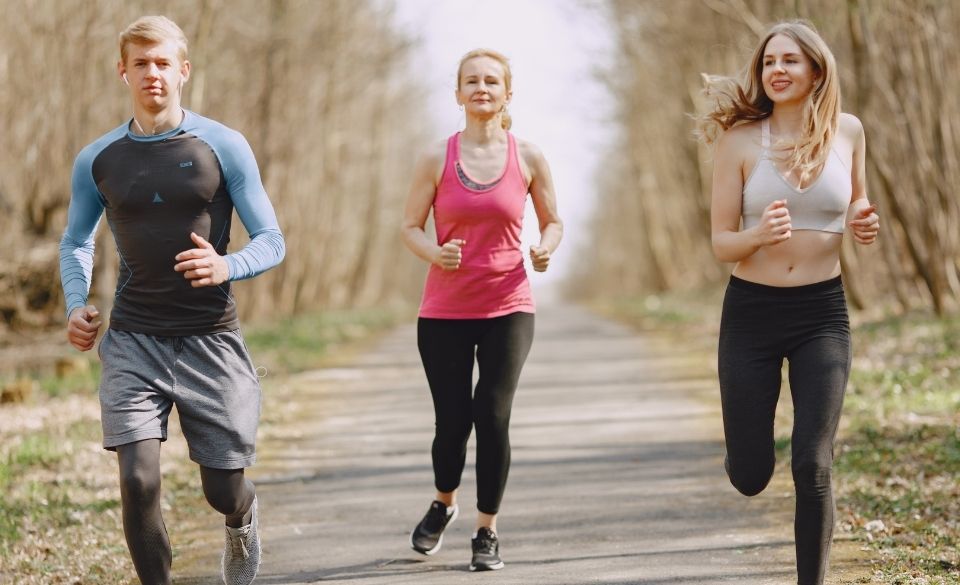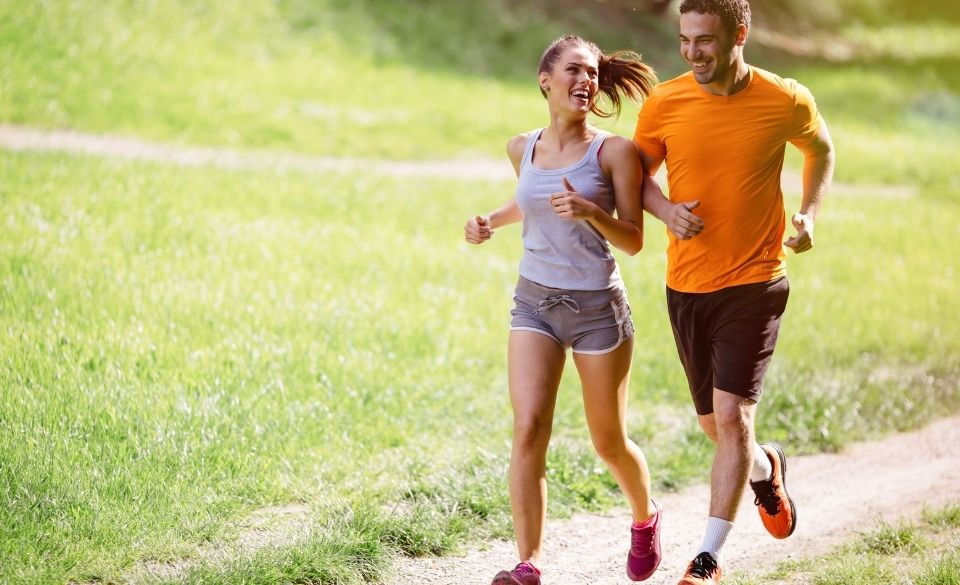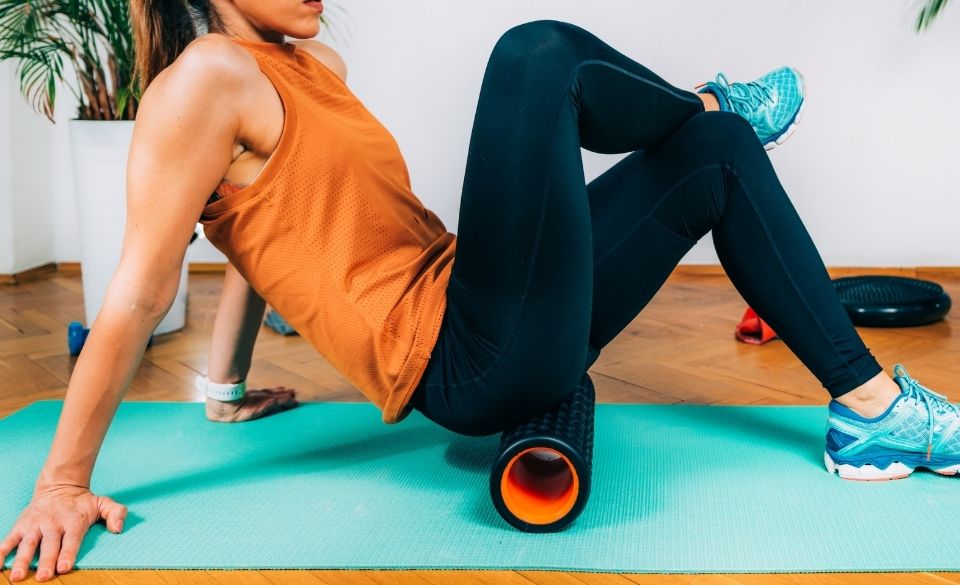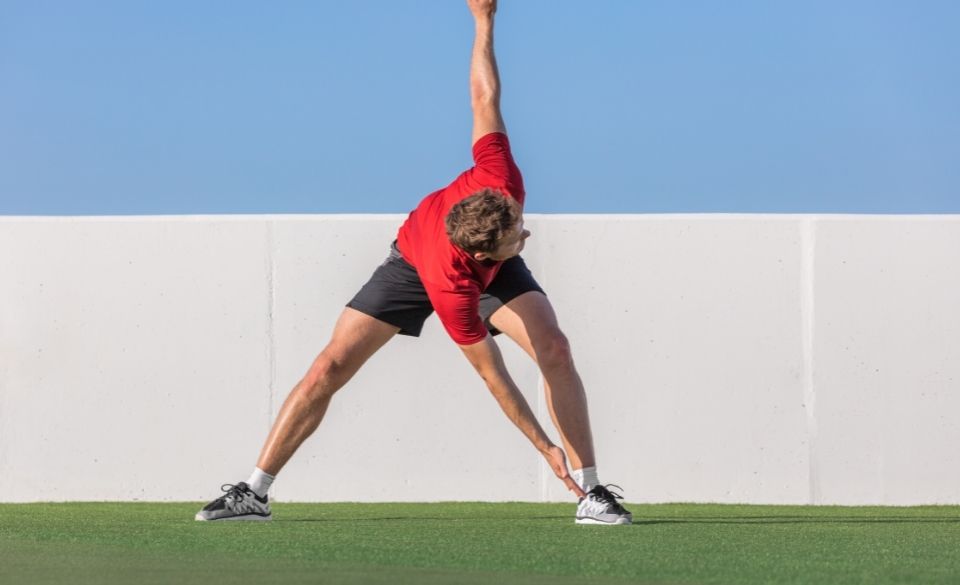
Cooling Down After Running – Exercises, Benefits & More
Page Contents
Since cooling down after running is needed to regulate blood flow. It is important to cool down after your workout.
While cooling down is usually geared towards competitive athletes, it can benefit the novice runner too. So, by reducing your speed in the last few kilometers of your run, you can help your heart rate and blood pressure lower back to their resting rate. Which can ultimately help speed up your recovery and help your body come down from a hard workout.
However, many people forget or just can’t be bothered warming down properly. That means many runners suffer from DOMS and delayed recovery because they fail to cool down properly.
Generally, this is the same for all sports. Cooling down is an essential part of your training and shouldn’t be forgotten.
In this article, we discuss:
– Is cooling down after running important?
– Best cool down running routines
– Cooldown exercises that don’t require running
– Cooldown stretches for faster recovery
Is Cooling Down After Running Important?
The importance of both warm-ups and cooldowns has been pushed on athletes for many years, teaching us to slowly increase the speed, then learning to dial it back the last few kilometers of a run. However, is cooling down after running important? What does science say?
Studies have shown that an active cool-down may reduce the risk of injuries and less neuromuscular fatigue. However, many of these studies have combined an active warm down with stretching and a warm-up. So while it’s hard to completely agree that an active cool-down is 100% responsible for staying injury-free, it is neither less an important part of the equation.
Other studies found that cooling down didn’t have any effect on preventing injuries. However, it did help prevent delayed-onset muscle soreness (DOMS) and improved recovery from hard intervals or workouts.
There are many other studies available online. However, many of them come to the same conclusion. They show us that a proper cool down, combined with the correct warm-up will reduce the chance of injury and DOMS, while also improving recovery. However, cooling down alone hasn’t been proven to reduce the risk of injury.

Cool Down Running Routines
There are many different routines when it comes to warming down. Some swear by walking the last kilometer to their house, will others find an easy 200 m jog or walk is enough.
Generally, the best cool-down routine for the runner is one that slowly brings down the heart rate. That means reducing your speed each kilometer for the final 2-3 km of your long run. Then finishing off the run with a 100m walk.
For harder interval sessions or tempo runs, that means taking it easy for 10-minutes by walking or jogging slowly .
By performing either of these cool-downs you can regulate blood flow and reduce stress on the heart and muscles. Thus, helping to speed up your recovery and preventing post exercise soreness.
It also provides a way to reduce inflammation of the muscles after an intense workout. It has also been proven to reduce lactate concentration in the muscles too.
Either way, there are more positives than negatives to performing a cool down after your run. So test what works best for you and trial different types of cool-downs. That way, you can find the best combination to help reduce soreness and fatigue. That way, you can implement the same warm down regularly.

Cool Down Exercises – What Else is There?
As a runner, there are many times we forget to warm down, which can mean we end up finishing our run at our doorstep. So, what should we do then? Should we continue to jog around the block or are there alternative cool-down exercises?
Luckily there are many other forms of cool-down exercises you can do. Cycling, swimming, and walking are all exercises that can help warm down after a run. However, both require some time and effort to be able to complete after a run. Luckily, foam rolling is another good alternative to do after a run that requires little to know preparation.
Foam rolling can help promote blood flow while slowing reducing your heart rate. It can also allow you to loosen up any tight muscles from the workout, thus helping to speed up recovery in the process.
However, if you are using foam rolling as a form of alternative cool down, make sure you don’t go too deep. The goal should be only to promote blood flow and loosen up the muscles.

Cool Down Stretches After Running
Other forms of cool-down exercises can include dynamic stretching. Dynamic stretching is a movement-based type of stretching. That means that you use the muscles themselves to create the stretch. So, it is different from the typical static stretching people are used to.
Some of the dynamic stretching you can do after a workout is:
– Lunges
– Knee to Chest
– High kicks
– T-Push ups
– Squats
– Jump Squats
– Jump Lunges
As you can see, the above dynamic stretches differ from a static stretch, as they aren’t held in position. But rather stretched through movement.
Conclusion
While the scientific data is debatable and often hard to get 100% reliable information from, warming down after a workout will help you recover much faster. Then if you pair it with the correct warm-up, it has been proven to help prevent DOMS, injury, and heart-related issues.
However, if you are too tired or in too much of a hurry to perform a proper running cool-down, try foam rolling or a brisk walk. Both will help prevent muscles soreness post-exercise, as well as promote blood flow to the muscles.



